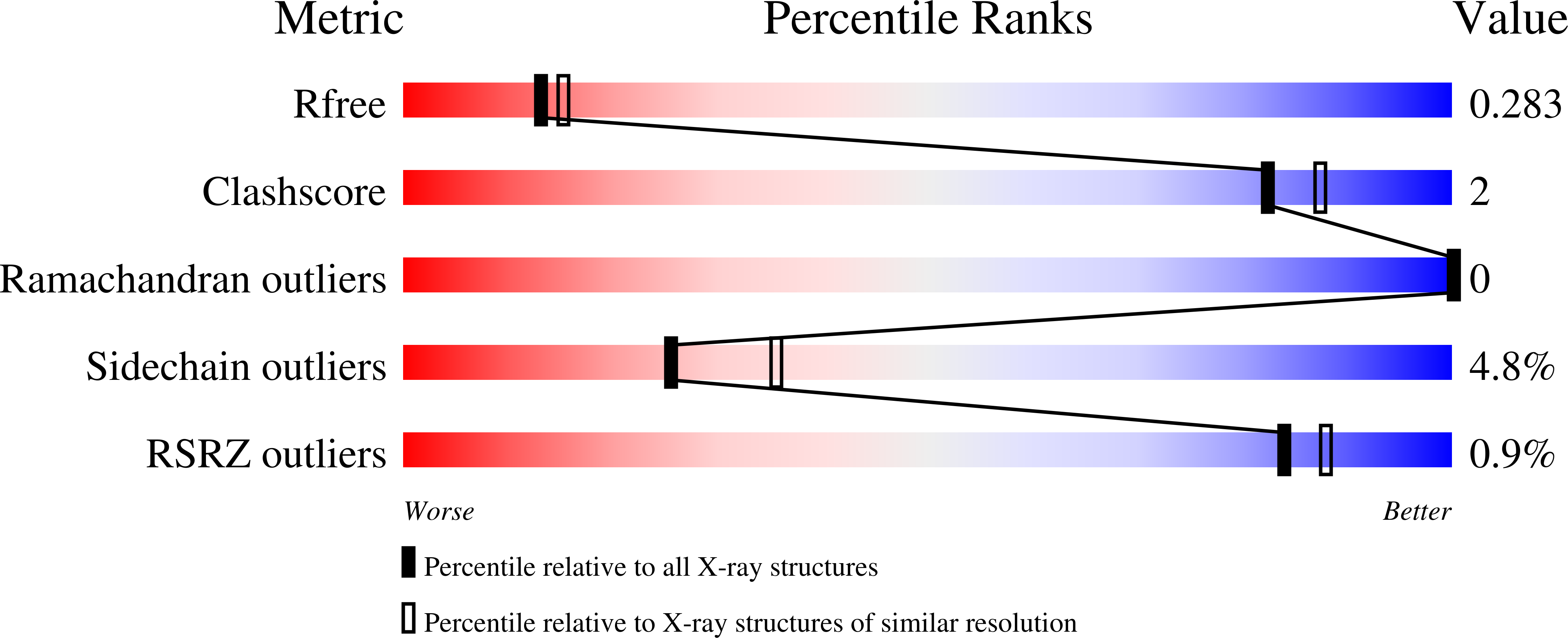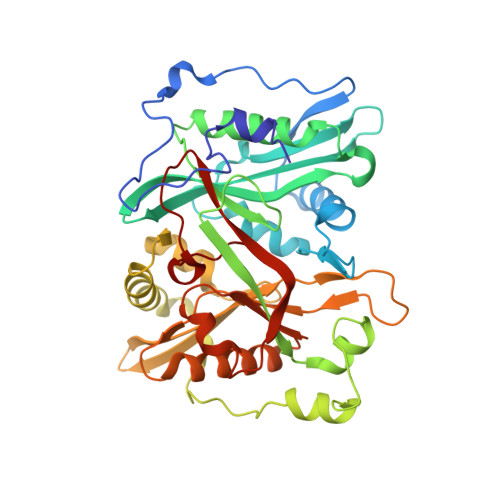Structure-guided optimization of quinoline inhibitors of Plasmodium N-myristoyltransferase.
Goncalves, V., Brannigan, J.A., Laporte, A., Bell, A.S., Roberts, S.M., Wilkinson, A.J., Leatherbarrow, R.J., Tate, E.W.(2017) Medchemcomm 8: 191-197
- PubMed: 28626547
- DOI: https://doi.org/10.1039/c6md00531d
- Primary Citation of Related Structures:
5G1Z, 5G20, 5G21, 5G22 - PubMed Abstract:
The parasite Plasmodium vivax is the most widely distributed cause of recurring malaria. N -Myristoyltransferase (NMT), an enzyme that catalyses the covalent attachment of myristate to the N-terminal glycine of substrate proteins, has been described as a potential target for the treatment of this disease. Herein, we report the synthesis and the structure-guided optimization of a series of quinolines with balanced activity against both Plasmodium vivax and Plasmodium falciparum N -myristoyltransferase (NMT).
Organizational Affiliation:
Department of Chemistry , Imperial College London , London SW7 2AZ , UK . Email: victor.goncalves@u-bourgogne.fr ; Email: e.tate@imperial.ac.uk.



















